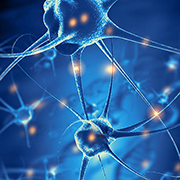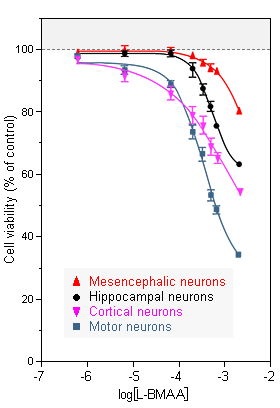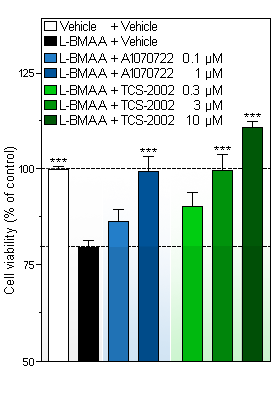Quest for Elucidating the role of GSK-3β in the Pathophysiology of ALS-PDC
Newsletter # 107

In vitro models
● the potential mechanisms underlying L-BMAA-mediated neuronal damage include the activation of a specific protein kinase, the Glycogen synthase kinase-3. Inhibition of this kinase effectively prevents L-BMAA-induced neuronal death.
It's noteworthy that GSK-3β activity serves as a converging point in the processes leading to the development of various neurofibrillary tangles and β-amyloid plaques associated with neurodegenerative diseases.
This pivotal insight underscores the potential of targeting GSK-3β as a therapeutic approach with broad implications for multiple neurodegenerative disorders 1.
1 https://doi.org/10.1016/j.bcp.2023.115923
-
Comparison of L-BMAA-induced cell injury in different types of neurons
Left panel:
Exposure of neurons with L-BMAA reduces in a dose-dependent manner the viability of different population types of neurons. The degree of susceptibility towards L-BMAA of the different types of neurons is in the following order: Spinal motor neurons, Cortical neurons, Hippocampal neurons, Mesencephalic neurons. -
Right panel:
300 µM L-BMAA reduces by about 20% the viability of primary neurons in culture (white vs black column). GSK-3β inhibitors (A1070722 and TCS-2002) inhibit in a dose-dependent manner the neuronal injury induced by L-BMAA (black vs blue or green column).
-
We look forward to hearing from you.
Get in touch


 PREVIOUS
PREVIOUS

